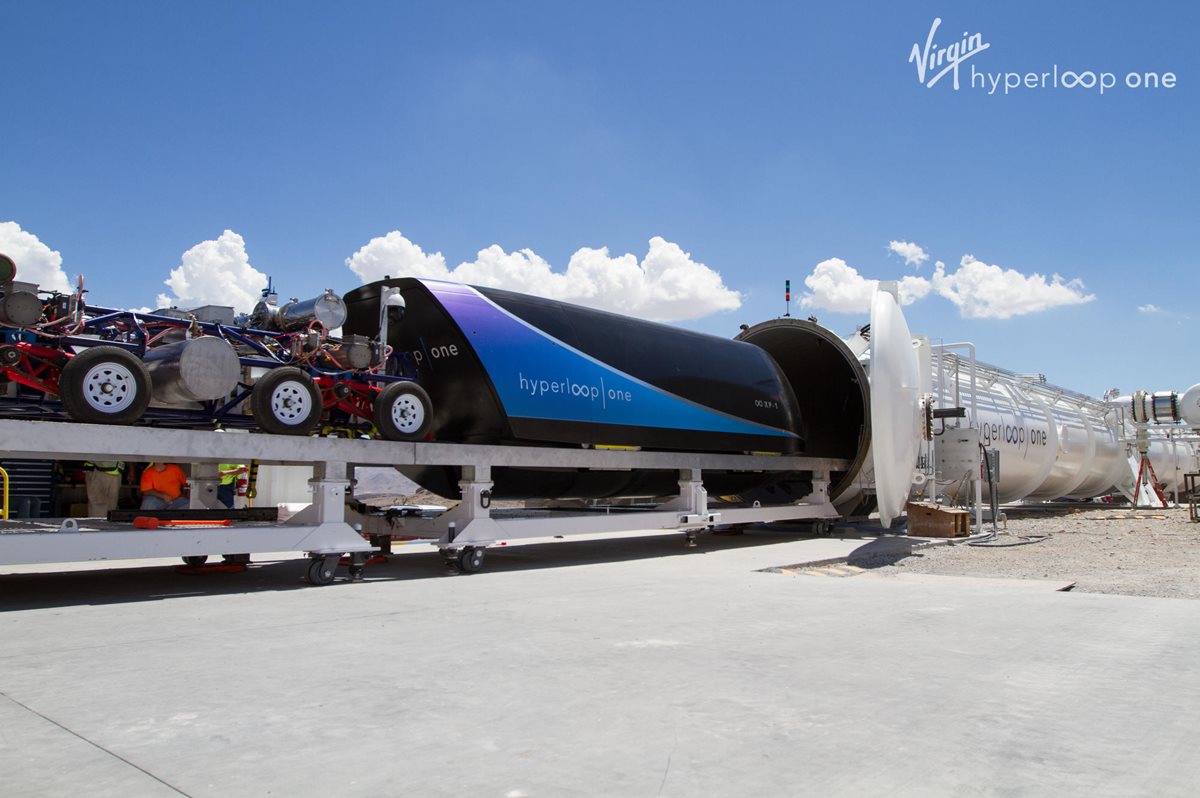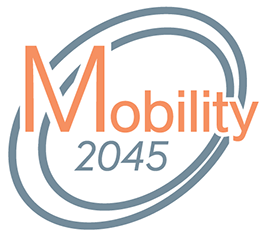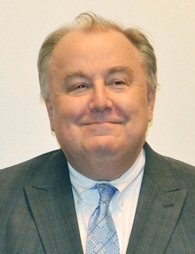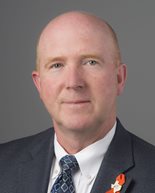 Hyperloop One photo
Hyperloop One photo
The Regional Transportation Council agreed to consider hyperloop technology as a potential way to link North Texans with the planned high-speed rail line to Houston, as well as with South Texas. Hyperloop relies on magnetic levitation to move people and goods through a low-pressure tube at high speeds.
North Texas Continues to Explore a Future with Hyperloop Technology
The Regional Transportation Council wants to know more about hyperloop technology and how it could be used to revolutionize travel. After Virgin Hyperloop One named Texas one of 10
areas to be considered for hyperloop technology, a delegation of RTC members visited the company’s test facility in North Las Vegas, walking away impressed with its potential to revolutionize travel.
Seeing first-hand the test site, which displays the sleek cylinder tunnel on top of cement pillars and stretches approximately five football fields, intensified the interest of the RTC members in this revolutionary transportation choice. Experts and engineers were in attendance during the visit to answer any questions about the system in terms of its functionality, unique attributes and the impact it could potentially have in Dallas-Fort Worth.
Hyperloop is powered by magnetic levitation, removing air pressure within the cylindrical tube, and leaving zero resistance against the moving pod. The pod floats just above the rails inside the tube and makes the travel experience similar to flying on a plane, minus the turbulence. With the absence of air pressure, the pod has reached up to 240 mph during testing.
The RTC has also agreed to consider both hyperloop and high-speed rail technology as part of the environmental analysis of the Fort Worth-to-Dallas corridor that would connect to Texas Central Partners’ Dallas-to-Houston HSR project. In addition to moving people rapidly, the hyperloop technology is looking to improve the transportation of goods and products.
There is another potential use of this system. The Fort-Worth-to-Laredo corridor could include a goods-movement component to a potential hyperloop line. The geography of North Texas makes it an attractive potential site to test this technology. DFW provides two metropolitan areas located on a straight and flat plain just over 30 miles apart. Because of the expected population of 11.2 million people by 2045, both Virgin Hyperloop One and the RTC see this as an opportunity to provide a more efficient and environmentally friendly transportation method to a population that is open to new ideas in transportation.
Continued tests and research will take place to try to make hyperloop a reality in North Texas. A Request for Proposals for a consultant team to complete a Tier 2 Environmental Impact Statement (EIS) is to be issued by the RTC to consider hyperloop technology and other high-speed rail options. In addition, the RTC has provided funding commitments to conduct a conceptual feasibility test over the high-speed technology connecting the region to Laredo. With a need to provide North Texas residents with more travel options, while positively impacting air quality, the RTC sees a bright future for hyperloop technology in the Dallas-Fort Worth area.
$135.4 Billion Mobility 2045 Approved by RTC
 Mobility 2045 was passed by the Regional Transportation Council in June. The Metropolitan Transportation Plan for North Central Texas is a long-range, innovative blueprint that addresses improvements necessary to meet the needs of one of the nation’s most rapidly growing regions through 2045.
Mobility 2045 was passed by the Regional Transportation Council in June. The Metropolitan Transportation Plan for North Central Texas is a long-range, innovative blueprint that addresses improvements necessary to meet the needs of one of the nation’s most rapidly growing regions through 2045.
While Mobility 2045 will build on current roadway, rail and active transportation options, it will also integrate technological initiatives related to high-speed rail, modern people movers and automated vehicles to modernize the way in which current and future DFW residents travel. Given an estimated population growth of 4 million people, this multimodal approach is needed to improve the reliability of residents’ daily commutes. The plan also looks to provide residents with numerous transportation options as part of a comprehensive transportation strategy.
Mobility 2045 proposes $135.4 billion be provided to the transportation system through 2045 to cover a recommended list of projects. The projects include nearly $50 billion for strategies geared toward infrastructure maintenance, more efficient management and operations of the current system, as well as growth, development and land use. The plan will allocate $33.3 billion toward enhancing transit options and $52 billion to roadway improvements to establish a more efficient travel experience.
The next step for Mobility 2045 is conformity, making sure the plan can be carried out without negatively impacting air quality. Because 10 North Texas counties are in nonattainment for ozone, it is important to ensure that Mobility 2045 is improving the overall quality of life for all DFW residents.
Once a conformity determination is made, North Texas will be able to benefit from the innovative Mobility 2045. For more information, visit www.nctcog.org/trans/plan/mtp/2045.
A Bright Future Awaits the North Texas Transportation System
I was honored to take part in a special event recently – the celebration of the opening of improvements to Interstate Highway 35W. The latest megaproject to be completed in our bustling region, this $1.6 billion improvement ushers in more than just new lanes. It offers drivers a choice. They can travel the general-purpose lanes of the 10-mile stretch for no charge, or they can hop on TEXpress Lanes for a more reliable commute. This project opened over the summer, the result of terrific partnership between the Texas Department of Transportation and North Tarrant Express Mobility Partners.
 Our rapidly growing – and changing – region requires a transportation system built to keep pace with the transformation that is occurring around us. Improved access on existing freeways is part of the solution. The expanded frontage roads, rebuilt general-purpose lanes and TEXpress Lanes provide more reliability to an area of the region that desperately needed relief.
Our rapidly growing – and changing – region requires a transportation system built to keep pace with the transformation that is occurring around us. Improved access on existing freeways is part of the solution. The expanded frontage roads, rebuilt general-purpose lanes and TEXpress Lanes provide more reliability to an area of the region that desperately needed relief.
The people who call Dallas-Fort Worth home, whether they just moved here or have lived in the area for decades, need more than better roads. To be a region of choice, we must also offer better options across the board, including transit and last-mile service. We are doing that, as evidenced by several projects that have opened, will soon be completed or are in the planning stages. Let’s review a few.
· TEX Rail – The $1 billion connection between downtown Fort Worth and Dallas Fort Worth International Airport will open by the end of the year, giving travelers who live or work in the west direct access to the airport via passenger rail. Dallas Area Rapid Transit has offered light rail access in the east since 2014 and is planning service along the Cotton Belt Corridor to Plano.
· Vehicle automation – The North Central Texas Council of Governments has embraced the idea of automated and connected vehicles and is working with area cities and other partners on project implementation. Arlington stated with low-speed Milo shuttles in the Entertainment District; Frisco has begun a pilot with Drive.ai vans to ferry businesspeople from their offices to shops and Restaurants near the Dallas Cowboys’ practice facility. Drive.ai vehicles also will soon be helping people get around the Entertainment District in Arlington. While the Milo shuttles have provided off-street transportation, Drive.ai will run on the roads. These pilot projects are examples of how the region continues to embrace innovation as a potential solution to mobility needs.
· LBJ East – The RTC and State transportation leaders worked hard to craft a plan to expand Interstate Highway 635 East in Dallas, Garland and Mesquite that includes increased capacity while enhancing safety for the thousands of motorists who travel the corridor daily.
· Hyperloop/High-Speed Rail – The future looks bright. The RTC has opened its arms to high-speed technology as a possibility linking Fort Worth and Arlington to the future high-speed rail line in Dallas. As we embark on the environmental assessment of this corridor, we are open to futuristic, tubular travel, especially if it’s going to get users from Fort Worth to Dallas in six or seven minutes. Eventually, hyperloop or high-speed rail technology could reach the Valley, roughly paralleling IH 35 from Fort Worth to Laredo.
Each of these project is valuable individually – to its neighborhoods, businesses and residents who use it. But when combined with the options we already have, each becomes more significant. That’s the way we should look at transportation projects and programs, not as corridor-specific improvements, but as components of a larger system that works together to move people and goods efficiently. After all ... mobility matters.
Early Interest in Problem-Solving Leads Bussell to Transportation
Loyl Bussell remembers as a young boy being drawn to engineering. He wasn’t specifically interested in transportation. That would come later. He just wanted to know more about how things worked, how pieces of a puzzle fit together.
 Engineering seemed like a natural career path for Bussell, who enjoyed finding ways to solve complex problems. When he graduated from high school, Bussell was initially drawn to petroleum engineering. But the timing wasn’t right for a job in that field. It was the early 1980s, when the downturn in the oil industry was beginning, making it hard to find a job in the field.
Engineering seemed like a natural career path for Bussell, who enjoyed finding ways to solve complex problems. When he graduated from high school, Bussell was initially drawn to petroleum engineering. But the timing wasn’t right for a job in that field. It was the early 1980s, when the downturn in the oil industry was beginning, making it hard to find a job in the field.
Eventually, he turned to transportation, aided by experience in college as a “summer hand,” for the Texas Department of Transportation. This allowed him to experience civil engineering and transportation first-hand.
Thirty years later, he is district engineer for the Fort Worth District, which covers nine counties.
He started at the bottom, he says, helping to survey projects. Then, he moved to construction, before transitioning to the lab, where he worked with roadway materials. Then, came an opportunity to work in design. All of this was at a technician.
“It gave me a real broad exposure to all aspects of the department,” he said.
Bussell earned a degree is structural engineering, which gave him the chance to go to Austin as an underwater bridge inspector. He earned a master’s degree in structural engineering and returned to Fort Worth to work in the bridge section.
One of his favorite projects was the DFW connector, which required a bit of a different mindset for an engineer with a structures background. He was able to make the transition to a project that required him to focus on a lot of unfamiliar areas and was proud to be able to make the transition successfully.
“That gave me a whole new perspective of our business because it was one of the first design-build projects in the state,” he said. “There were a group of us who were selected to lead that project, and that led to me becoming the director of planning and development.”
One of the most region’s most significant current projects is the redesign of the Interstate Highway 30-State Highway 360 interchange and its cloverleaf ramps, the last vestige of the old Dallas/Fort Worth Turnpike.
“I think it’s going to allow more capacity, more functionality in that area, which will help,” he said of the redesign, slated to be complete in 2020.
It should help traffic flow in the Entertainment District as people around the region want to come for the Cowboys, Rangers or another attraction, he said.
“My career has really spanned all over the place, and it’s given me some really good insight into what the department does, how we can really be a good benefit to the taxpayers, how we can benefit the community,” he said. “And that’s what I want to focus on.”
Bussell was appointed to the Regional Transportation Council in May 2017, when he was named Fort Worth district engineer. Before taking the position, he had the opportunity to serve on the Surface Transportation Technical Committee, including time as chair.
“One of the things that I really benefited from on STTC was being a part of and observing the relationship amongst all the … stakeholders in the region and seeing how it is a give and take approach across the region,” he said. “Just seeing that interaction and cooperation for the benefit of the region was a huge benefit.”
Although relatively new to the RTC, he has been influenced by his colleagues and their willingness to work together for the benefit of the entire region.
“I think the most impressive thing to me was the collaboration and cooperation among the RTC members in all different areas parts of the region,” he said.
Regardless of whether they represent the most heavily populated metro areas or rural parts of North Texas, members work together to solve regional issues, he said.
One thing that helps the RTC continue to meet the needs of the growing region is its embrace of creativity.
“Anytime we can bring innovation into the mix and make things more efficient, more streamlined, just come up with new ideas it will typically help us with the funding issues,” he said.
Even before he was appointed to the RTC, he had worked with many members and COG staff members.
After working his way up from the bottom and developing relationships along the way, Bussell feels a responsibility to continue to cultivate a family atmosphere.
“Just over the years, developing those friendships, developing those working relationships, it makes me even more motivated to ensure the department is a place where one can work and feel a part of it, feel a part of the family,” Bussell said, “feel like they’re accomplishing something that’s of benefit to the community, to the taxpayer."
Building a Network of Alternative Fuel Infrastructure
As alternative fuel vehicles continue to grow in popularity, a provision in the Fixing America’s Surface Transportation Act could coax even more North Texans to embrace them.
The FAST Act calls for Dallas-Fort Worth and other regions to establish alternative fuel corridors along interstates and other major highways. The goal is to provide drivers more confidence in the ranges of electric vehicles and those powered by fuels other than gasoline, such as propane, natural gas and hydrogen.
Most of the region’s interstate highways, except Interstate Highways 820 and 635, have been designated Alternative Fuel Highway Corridors through the first two rounds of nominations.
In the 16-county NCTCOG region, electric vehicle charging, natural gas and propane stations have been identified along the corridors. The next step is to post signs to make it easier for people to locate them when they need to refuel or recharge.
Stations must be within five miles of the highway and publically accessible. The distance permitted between stations varies by technology. For example, fast-charging electric vehicle stations are spaced 50 miles apart. There are 36 fast-charging stations along 355 miles of EV-ready roadways in the region.
This infrastructure can provide a 60-80 mile charge in 20 minutes, much faster than the Level 2 chargers at various retail and dining spots throughout the region. For propane, the maximum distance is 150 miles between stations; natural gas stations can be between 150 and 200 miles apart. There are no hydrogen stations in Dallas-Fort Worth.
North Texas is well-equipped with stations for alternative fuel and electric vehicles. But what about traveling out of the immediate area?
This takes coordination with the Texas Department of Transportation and other regions, as well as surrounding states, to ensure the development of a seamless national network. NCTCOG staff has spoken with regions in Oklahoma and Louisiana in an effort to begin addressing the gaps between the large metropolitan areas. NCTCOG is seeking feedback from residents, businesses and governments to help determine additional highways that could be designated alternative fuel corridors. Assistance is also being sought from the public on where stations can be added near a highway in an effort to make the region more prepared for alternative fuels.
Nationally, 58 corridors in 44 states and Washington, D.C., have been nominated in the first two rounds of designations. More than 100,000 miles of the National Highway System is part of the network.
The Federal Highway Administration plans to provide opportunities yearly for expansion of the system with the ultimate goal of a well-marked national network that allows owners of these vehicles to travel across the country with the confidence that they will be able to fuel or power their cars and trucks. Round 3 of corridor nominations was issued on October 5, 2018. All nominations for this latest round are due January 31, 2019. For more information on the alternative fuel corridors, visit https://www.fhwa.dot.gov/environment/alternative_fuel_corridors/.
Survey Says: Cyclists Most Comfortable Separated From Cars
Regional planners continue to examine ways they can provide more active transportation options that will allow residents to safely bicycle to destinations throughout North Texas. Public involvement is a key component of any transportation project. Residents need to be updated about projects that directly affect them, and they often have ideas that can positively influence projects or policies. One way to ensure their voices are heard is to go directly to them.
NCTCOG has completed the Bicycle Opinion Survey of adults in the 12-county metropolitan area, which involved interviews with more than 1,900 adults covering a range of bicycle-oriented subjects from how often they rode and their level of comfort to bicycling barriers and proximity to bike facilities.
The survey classified respondents into the four types of cyclist.
The four types are:
Strong and Fearless (2 percent): Will ride a bicycle regardless of conditions. Bicycling is an important part of their identity.
Enthused and Confident (14 percent): Somewhat comfortable sharing the roadway with vehicles, but prefer to have bike-specific facilities.
Interested but Concerned (36 percent): Curious about riding a bicycle, but afraid to ride. They would ride more with separated facilities.
No Way, No How (48 percent): Not interested in cycling or comfortable doing so, or physically unable to ride.
The results in the 12-county North Texas region, which in addition to urban areas also includes rural areas and small towns, were similar to those reported in Austin. For example, in the North Texas region, approximately 50 percent of respondents are classified as either “enthused and confident” or "interested and concerned."
A majority of North Texas respondents (55 percent) indicated they would like to bicycle more, which includes residents who reported not having bicycled in the past year. Hot weather and a lack of various types of facilities were the reasons most often identified among all respondents surveyed as the top obstacles to bicycling more often. The distance to the nearest trail and the lack of showers at the end of a bicycle trip were also identified as issues impacting the ability or desire to bicycle more often. The survey found the closer respondents lived to a bicycle facility, the more likely they were to ride a bicycle in the past year. Another important conclusion drawn from the NCTCOG Bicycle Opinion Survey was people's desire for more dedicated bike facilities, separated from vehicular traffic, such as an off-street path or on-street dedicated bike lanes separated from traffic by wide buffers or physical barriers.
Only a small percentage of residents indicated they are comfortable riding a bicycle with traffic on streets that do not have bike lanes separating them from vehicle traffic lanes. Currently, the region boasts 700 miles of off-street paths and 400 miles of on-street bikeways, with more funded or planned in the coming years. A few additional key findings from the survey: When asked about the availability of bicycle facilities and if there are too few bicycle facilities in their community, residents, by significant majorities, indicated there are not enough bicycle facilities. The percentage of residents rating as "too few" bicycle facilities are as follows:
· 62% -- too few off-street bicycle paths and trails
· 63% -- too few bicycle-friendly streets
· 73% -- too few on-street dedicated bike lanes
· 75% -- too few places to park bicycles such as bike racks and storage locations
The results of the opinion survey help guide local and regional investment in bicycle infrastructure, and NCTCOG works actively with local communities for such improvements through various transportation funding programs. In June 2017, for example, the Regional Transportation Council awarded $34.2 million to construct shared-use paths, on-street bike lanes and safe routes to school as part of the Transportation Alternatives Set-Aside Call for Projects. Included were facilities that will improve access to schools, large employment centers and transit throughout the region.
Another important conclusion drawn from the NCTCOG Bicycle Opinion Survey was people’s desire for more dedicated bike facilities, separated from vehicular traffic. Currently, the region boasts over 700 miles of off-street paths, with more funded or planned for the coming years. This will include efforts to connect residents to transit stations, jobs, entertainment options and parks throughout the region. Progress is being made on a 53-mile network of connected trails that would do just that for people living and working in Fort Worth, Arlington, Grand Prairie, Irving and Dallas.
Ultimately, knowing what people think about bicycling, whether it is their level of comfort or how likely they are to even ride a bike, will help NCTCOG prioritize funding and use its resources most effectively. Planners will use the data from this report and other initiatives to improve mobility options so residents can pedal even more places than today.
NCTCOG Launches Redesigned Website
Our agency website has a brand new look and feel! The redesigned website launched this summer with a new interface we hope will make it easier for you to access the information you need, whether you are interested in a project, program, policy or public outreach opportunity.
You’ll find us at the same location, but we’ve worked to make it streamlined, easier to navigate and more convenient for mobile users. We're still optimizing it, so pardon our dust.
Visit the Transportation Department page to explore our program areas and resources: www.nctcog.org/trans. We’re always looking for how to improve, so your thoughts about the new site are welcome. Submit comments and questions to transinfo@nctcog.org.